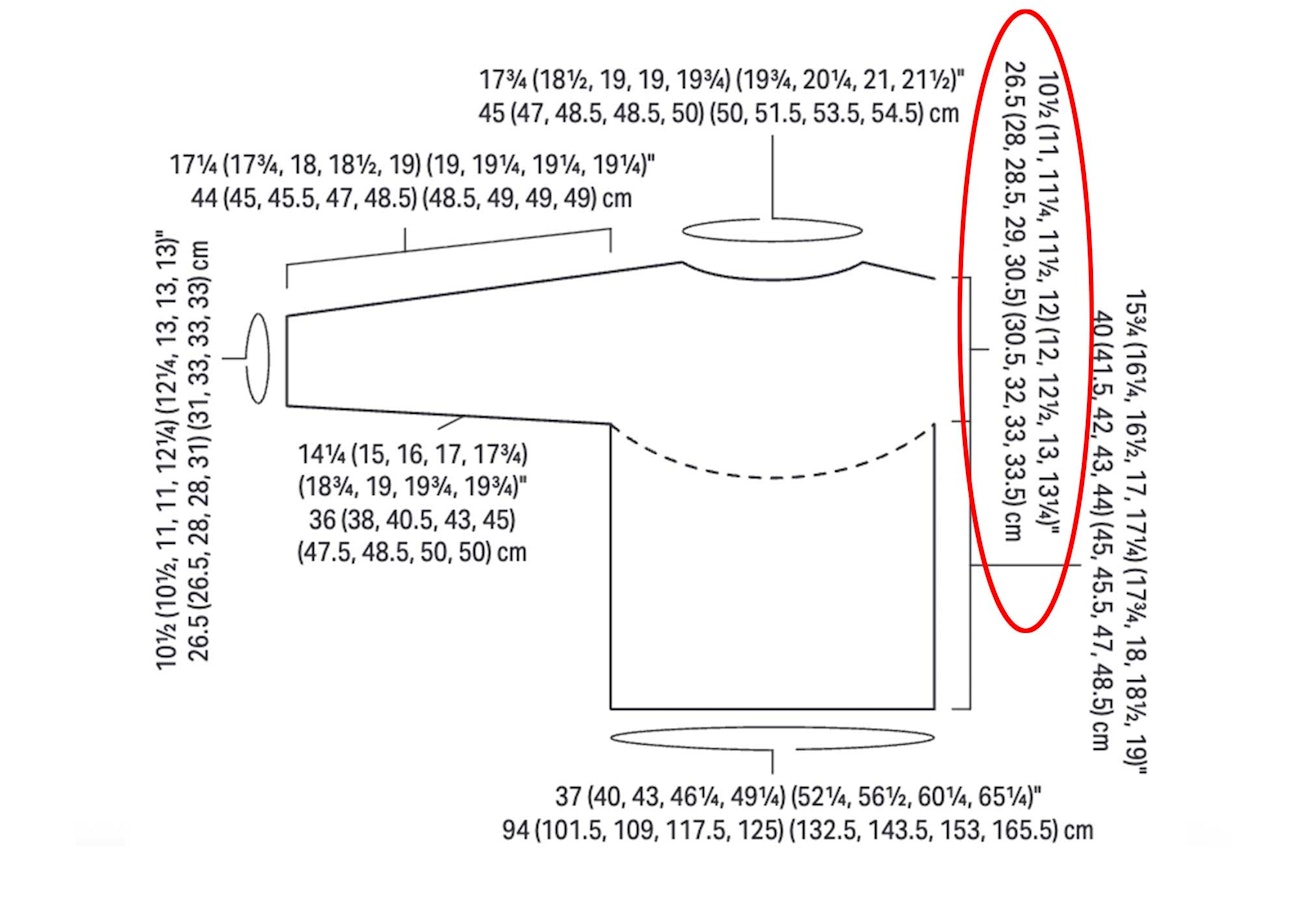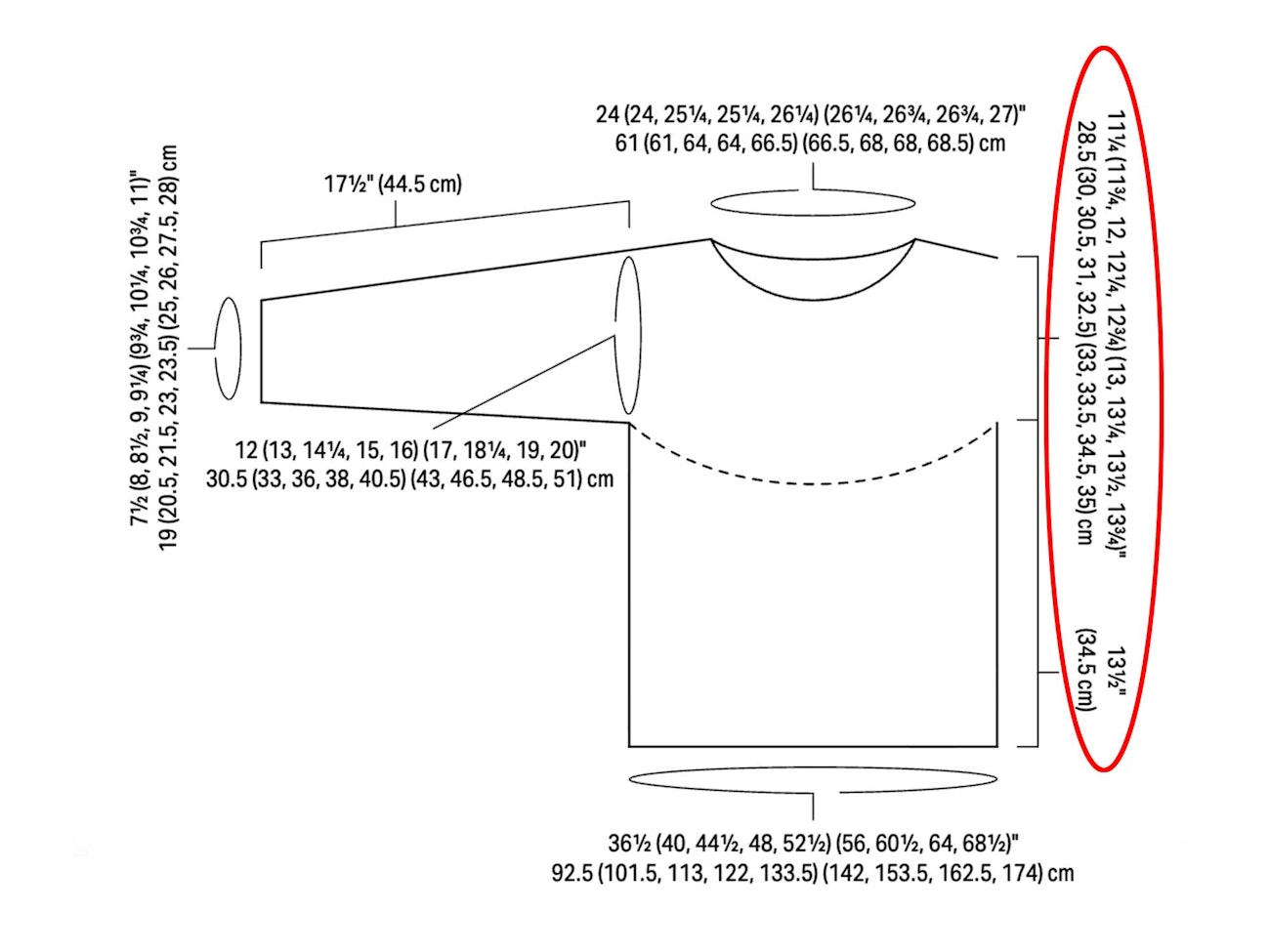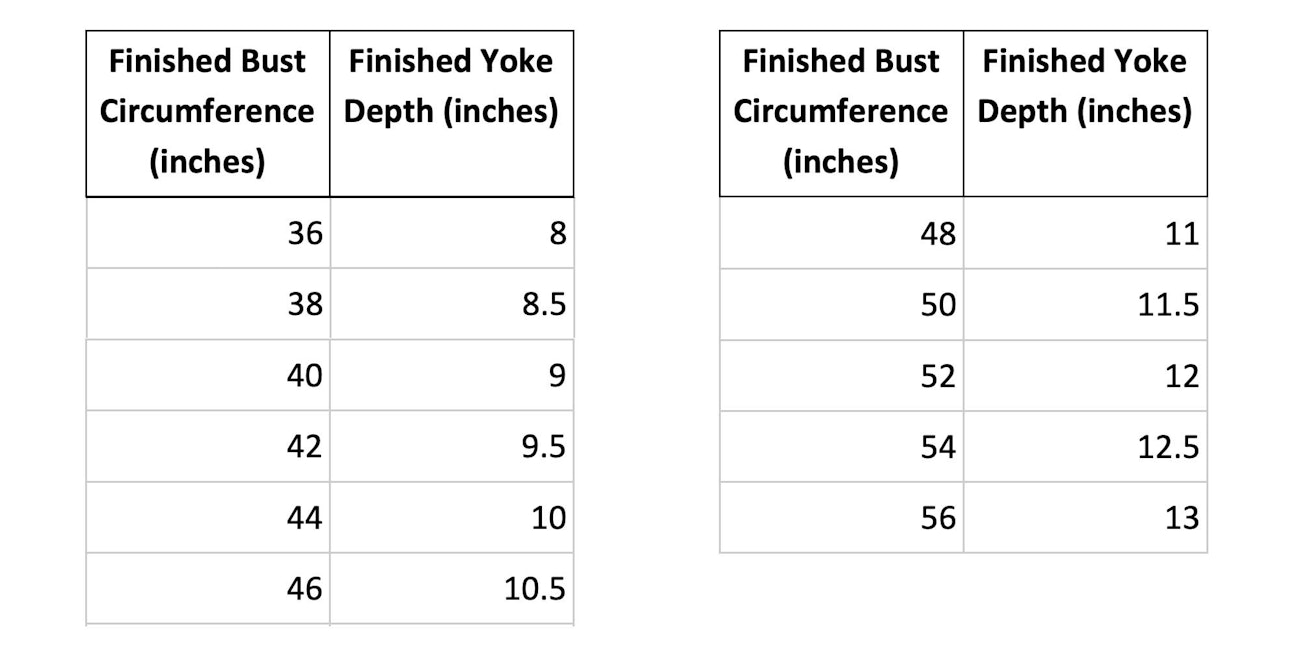Subscriber Exclusive
How does yoke depth affect the fit of your sweater?
Learn how yoke depth impacts fit, style, and silhouette—and a great trick for adjusting a pattern for your preferred ease.
Learn how yoke depth impacts fit, style, and silhouette—and a great trick for adjusting a pattern for your preferred ease. <a href="https://farmfiberknits.com/yoke-depth/">Continue reading.</a>
https://farmfiberknits.com/cdn-cgi/image/format=auto/https://www.datocms-assets.com/101500/1760586694-tiglar-yoke-header.jpg?auto=format&w=900
Here’s what we know about the perennially popular circular yoke sweater—it’s all about the upper body. Within that section we know as the yoke—the upper body between neckline and underarm—a knitter has a lot of work to do. What you notice right away, in most such designs, is the fun patterning up there. Take these two sweaters, for example:
Get a closer look! Click any image in the gallery below to open it in full-screen mode.
The Tíglar Tvier (left) and Clematis Yoke Pullover (right) both feature bold colorwork patterning in the yoke. The colorwork is what draws the eye and makes a knitter want to cast on, right? What colors would you choose? What yarn?
But what else is happening in these yokes? Friends, this is where the sweater geek in me gets excited! Because within the patterning, there is a world of construction going on.
A knitwear designer has to engineer shoulder shaping and construction within the patterning of a circular yoke sweater. The neckline circumference must be smaller than the bust/chest circumference. The sleeves must join the body and become one. So all that patterning has to be designed to work with shaping across its depth. If you’re working top down, that means increases. Bottom-up, decreases. In pattern.
This synchronicity between stitch pattern and shaping and depth are what make circular yokes so enchanting. It is also what makes altering any one of those elements difficult.
Choosing a Size
When you choose a size of a sweater pattern to knit, your primary focus is on bust/chest circumference. With
SUBSCRIBER EXCLUSIVE
Here’s what we know about the perennially popular circular yoke sweater—it’s all about the upper body. Within that section we know as the yoke—the upper body between neckline and underarm—a knitter has a lot of work to do. What you notice right away, in most such designs, is the fun patterning up there. Take these two sweaters, for example:
Get a closer look! Click any image in the gallery below to open it in full-screen mode.
The Tíglar Tvier (left) and Clematis Yoke Pullover (right) both feature bold colorwork patterning in the yoke. The colorwork is what draws the eye and makes a knitter want to cast on, right? What colors would you choose? What yarn?
But what else is happening in these yokes? Friends, this is where the sweater geek in me gets excited! Because within the patterning, there is a world of construction going on.
A knitwear designer has to engineer shoulder shaping and construction within the patterning of a circular yoke sweater. The neckline circumference must be smaller than the bust/chest circumference. The sleeves must join the body and become one. So all that patterning has to be designed to work with shaping across its depth. If you’re working top down, that means increases. Bottom-up, decreases. In pattern.
This synchronicity between stitch pattern and shaping and depth are what make circular yokes so enchanting. It is also what makes altering any one of those elements difficult.
Choosing a Size
When you choose a size of a sweater pattern to knit, your primary focus is on bust/chest circumference. With[PAYWALL] good reason, of course—it has to fit around your body. But what you’ll find, in a sweater like these, is that yoke depth is tied to body circumference. The stitch count at underarm, the pattern repeats, and the shaping rounds within the yoke are fixed. So, we don’t think about yoke depth as much—we just follow the pattern.
But yoke depth is a key element when it comes to fit. Take a look at these three yoke sweaters from my collection fit at the underarms and chest:
From left to right, these sweaters have the following yoke depths:
- Plain camel pullover, 12" deep
- Purple colorwork sweater, 10" deep
- Brown lacy pullover, 14.5" deep
I have a 40" bust, and these sweaters also vary in finished circumference, resulting in different amounts of positive ease on me. But you can see pretty quickly that the shorter yokes have a closer fit, right? The deepest yoke almost has a batwing effect in the silhouette—you might call it “poncho-esque”—which works in its lacy openwork, worked with a fine, drapey yarn.
The shorter the yoke, the closer you get to what I call a “high and tight” look in a yoke sweater. Back to the first two example sweaters: I’d call the Tíglar Tvier a high and tight on this model, while the Clematis is a deeper yoke, creating more drape and volume in the upper body.
The designer chooses what kind of silhouette they are going for, but it’s always a good idea to review the schematic for a pattern to get an idea of the yoke depth for your size. Here’s the schematic for the Tíglar Tvier, with the yoke measurements circled:

Compare those measurements with the yoke depth in the Clematis. These designers have deliberately chosen different approaches to yoke depth! The depths don’t differ drastically, but they do differ, with the Clematis featuring a deeper yoke across sizes. And you can see the effect in the modeled sweaters.

Ratio of Bust to Yoke
Because design offers flexibility in sweater proportions, there is no wrong answer when it comes to yoke depth. Each design will follow a different philosophy when it comes to yoke depth and sizing, but there are some standards generally followed by designers and technical editors. When I wrote a book about sweaters for plus-size women years ago, I consulted such folks and came up with the following recommended standards for yoke depth in circular yoke sweaters:

This sizing scheme has the yoke depth increasing by 0.25" for every 1" in bust circumference increase. As shown with the previous two schematics, design choices affect these measurements quite a bit, but this chart should be helpful in setting a benchmark for yourself.
Note: My purple sweater, shown above, measures 4" with a 10" yoke depth, modeled on my 40" bust. That’s exactly following the recommended bust-yoke ratio in my chart, and—for the record—I would not want that yoke any shorter.
Changing the Yoke Depth
How will you know if the yoke is too deep or too shallow for you? Well, if you knit a whole sweater and find the armpits are hanging too low, then it’s too deep. If the upper body is restrictively tight and the armpits are really up in your armpits, it’s probably too short.
To change the depth of the yoke means to change the distance between shaping rounds in the yoke, assuming you still start and end with the pattern’s prescribed stitch counts.
When worked from the bottom up, these designs are generally worked as follows: Sleeves are joined with the body to form the yoke, which is worked for 2–3" even from underarm up, then a shaping round occurs. Then, equidistant depth is worked even between the following shaping rounds, with a total of 3–4 shaping rounds in yoke. Finally at the neck edge, you should have about 25% of the number of stitches you had at the underarm (joining round, with body stitches and sleeve stitches on needle).
If the yoke patterning allows, you can add or decrease depth between those shaping rounds, thereby changing the yoke depth without changing the circumferences. But if the pattern features colorwork or other stitch patterns in the yoke, changing the rate of shaping may be difficult. You then need to decide: Do you want to redesign the pattern, or choose another pattern?
Final Thoughts and Tips
Circular yokes are known for their elegance, seamless knitting, and decorative patterning. They are not known for their ease in customization or for tailored fit. I recommend choosing a size with 4–10" of positive ease and embracing a drapey, fluid fit, in which yoke depth is also generous. I really think the more ease, the better in this style.
But if you are petite or tall, yoke depth is a consideration for you, and determining if and how you can alter yoke depth is essential. Look for patterns with plain knitting above the underarm where you could potentially add or subtract rounds before the patterning begins. Look for patterns with small stitch repeats, which make for easier redesign. Or look for designs with plain knitting between shaping rounds, wherein you could alter depth.
Knit and be well,
— Lisa
Resources









